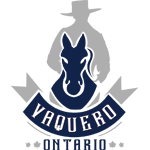That’s a quote worth reflecting on. Today’s riders are often in a hurry—rushing to get ready, to go somewhere, and to show off. As Martin Black might say, “Speed will just get you into trouble sooner.” Yet, here we are, racing around as if our horses were mindless machines, just waiting to be pulled or kicked in one direction or another. Heaven forbid the horse doesn’t understand the constant pulling and banging—it makes a mistake, and suddenly the rider’s reaction is, “stupid horse!”
To be honest, most riders spend very little time on learning the fundamentals of horsemanship. They are more focused on having fun than on developing the skills needed to become better horsemen. When they do take lessons, the instructors are often not true horsemen themselves or are not well-versed in horsemanship. Learning about the essential skills of feel, timing, and balance is a whole other journey—one that requires a level of dedication few are willing to pursue.
The Importance of Thought
Becoming a better horseman requires a lot of time spent thinking. Thinking about what happened, thinking about what led up to that moment, reflecting on your actions, and considering what worked and what didn’t. In the midst of all this reflection, it’s important to balance your thoughts about your own role in the situation with those of the horse.
You need to spend as much time reflecting on what you did, or didn’t do, to contribute to your horse’s reaction as you do focusing on the horse’s behavior. Remember, horsemanship is a relationship, and each part of that relationship influences the other. After you’ve thought about what happened, you need to go deeper—think about what occurred before the situation unfolded. Your thoughts should go beyond just emotional reactions or the immediate situation. Analyze and constantly question what led to the outcome.
A Scenario to Reflect On
Imagine you’re on a trail ride, walking along with friends, when suddenly your horse breaks into a bumpy lope while climbing a hill. You feel jostled, maybe even at risk of falling off. What happened? Why did it happen? What did you do about it, and what could have been done differently?
Horses actually find it easier to lope up hills than to walk. And when one horse starts to lope, the others usually follow suit. Ask yourself: How many strides into the lope were you when you realized your horse was about to start? Did you sense it coming before the lope started? You would have, if you had been in the habit of communicating effectively with your horse.
The problem many trail riders face is that the ride often becomes more of a social activity than a focused task. As a result, riders tend to zone out, paying little attention to their horses. It’s easy to get distracted by conversation, the fresh country air, and the scenery. You might find yourself saying, “Hey, get your head up. I didn’t tell you to eat that… oh, never mind, everyone else is doing it now too.”
When you get to the bottom of the hill, having paid so little attention to your horse, did you even notice your friend’s horse starting to gear up for a quick ascent? Probably not. If you had noticed, you could have acted sooner and been better prepared instead of reacting “too late.”
But imagine this: if you had noticed your friend’s horse starting to shift and prepare for the climb, and at that very moment, you also noticed your own horse subtly preparing to follow, you could have been ready. By shortening your reins and giving a light bump as your horse shifted his weight, you could have addressed the situation before the lope started. You would have responded just at the right moment, not “too much” and not “too late.”
The Power of Timing
Improving your timing and feel takes practice, but the rewards are immense and addictive. There are countless situations where you can practice timing and feel with your horse. The more you practice, the better you get, and so does your horse. Eventually, it will become second nature for both of you, and your ability to tune into one horse will transfer to others.
If you want to develop these skills, you need to start with an awareness of what it means to be prepared—to anticipate the horse’s movements before they happen. Then, actively look for opportunities to practice. Don’t focus on just one scenario, like “running up the hill.” Pay attention to other things, such as when your horse starts to drop his shoulder on a turn. The moment you see your horse prepare to shift his weight, you can block the movement with your inside leg or outside rein. The goal is to make a subtle, precise correction so that it doesn’t need to be overdone—so it feels like nothing really happened at all.
Soon enough, your horse will start to recognize your preparation before you even make a move. He will stop “preparing” for a shift in balance because he’ll sense you’re already one step ahead.
Final Thought
As Tom Dorrance famously said, “First you go with the horse, then the horse goes with you, then you go together.”
I hope this article has given you something useful to reflect on. Developing a deeper connection with your horse and honing your timing and awareness takes time and dedication, but the journey is well worth it.

